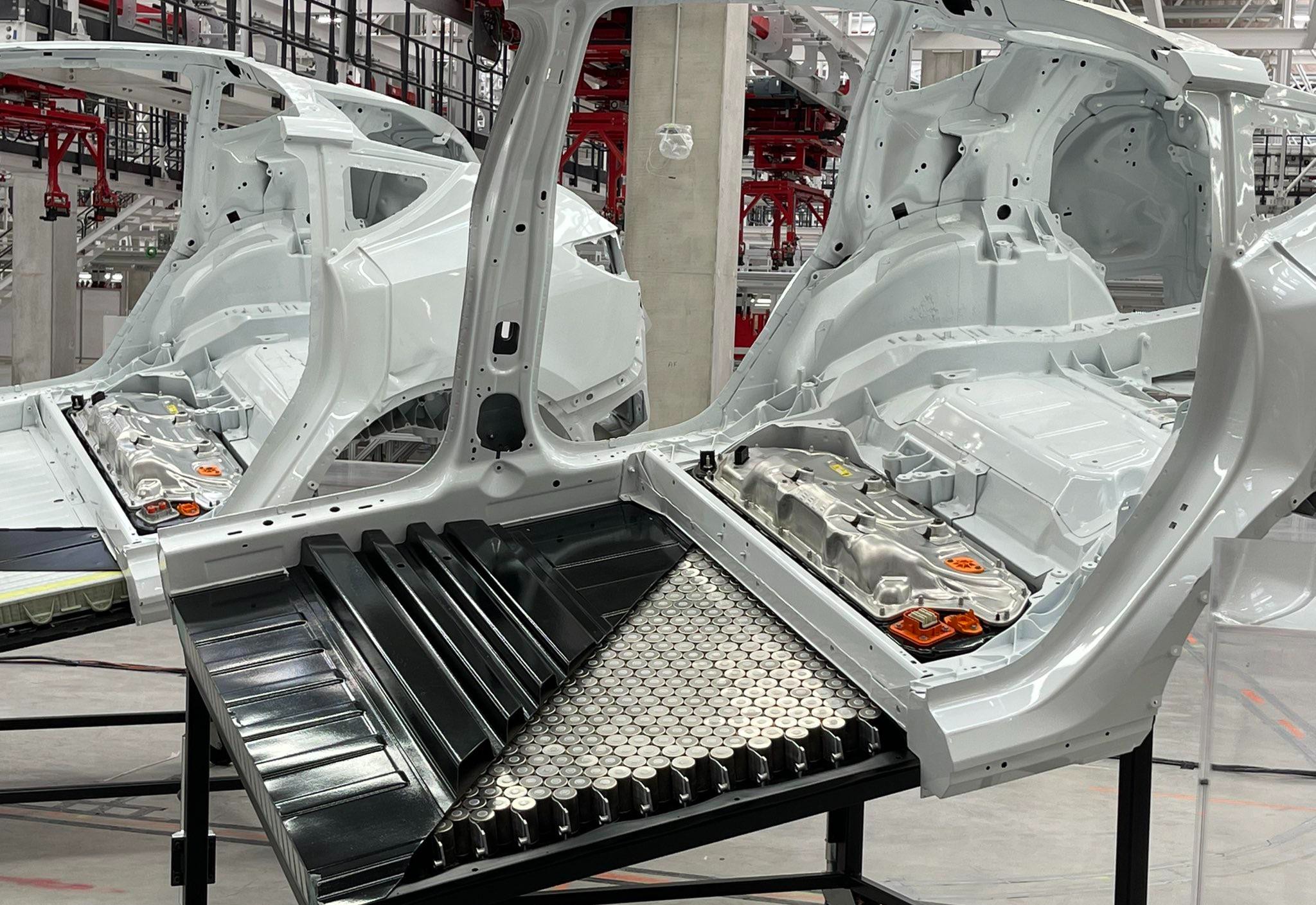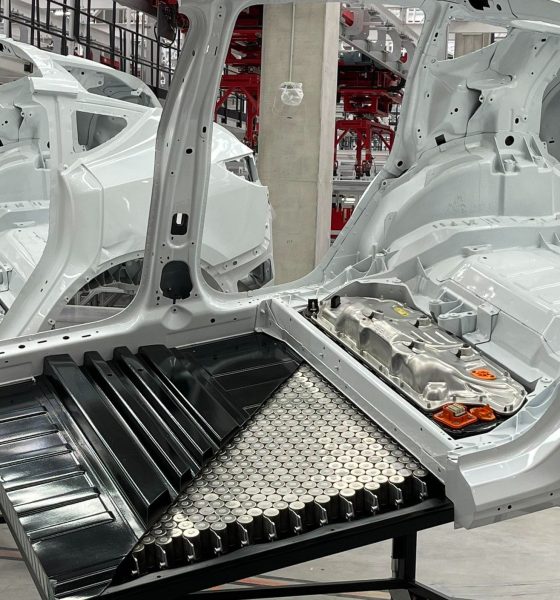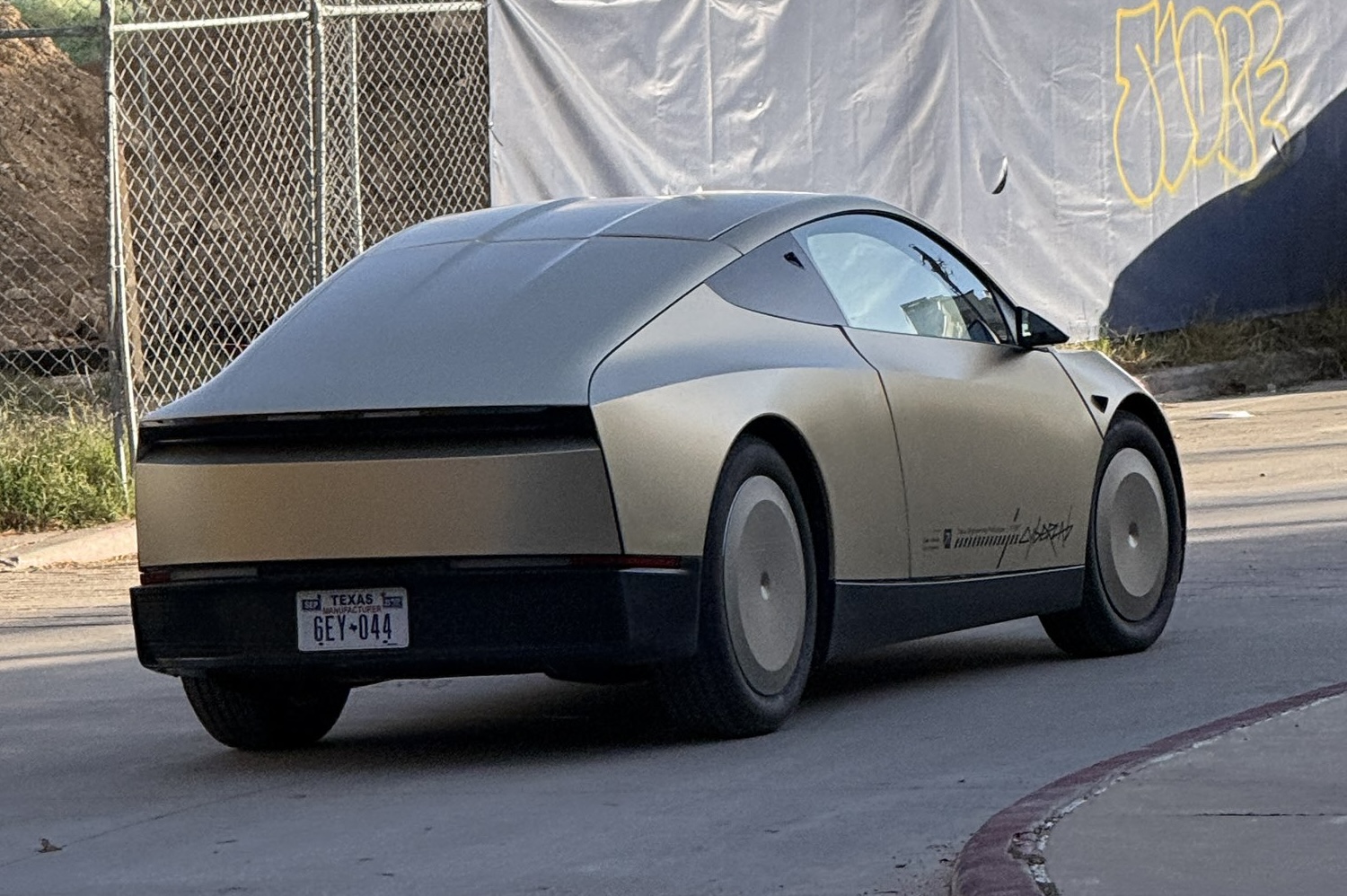

News
Lucid CEO shares thoughts on EV batteries, range, and Tesla’s 4680 battery cells
Lucid CEO Peter Rawlinson recently shared his thoughts about the electric vehicle industry, the battle for range supremacy, and rival Tesla’s efforts to develop and produce its own 4680 cells. According to the CEO, the range of electric vehicles may see some surprising trends in the distant future, and Tesla’s 4680 cells may not be as big of a breakthrough as initially expected.
Rawlinson’s recent comments were shared in an extensive interview with IEEE Spectrum. As a company, Lucid is known to work extremely hard to maximize the range in its vehicles, with the Air sedan, its first car, becoming the first electric vehicle that received an EPA rating above 500 miles per charge. Using the same 2170 cells that are powering vehicles like the Tesla Model 3 and the Rivian R1T, Lucid’s six Air sedan variants have seized the top six spots in the EPA’s range rankings.
The Lucid CEO is not a proponent of simply using more batteries to extend range, similar to what companies like GM are doing with the 350-mile Hummer EV’s 200 kWh battery or what Rivian seems to be doing with the ~400-mile R1T’s 180 kWh pack. As per IEEE, Rawlinson calls such strategies as “dumb range.” This was definitely something that Lucid avoided with the Air sedan, as the vehicle is able to achieve its class-leading 131 MPGe with a 118 kWh battery pack.
Interestingly enough, Rawlinson believes that while there is a battle for range in the electric vehicle sector today, this would likely not be the case in the future. With electric vehicles becoming more commonplace and affordable, and with home charging becoming the norm, the Lucid CEO believes that future electric vehicles may actually have less range. “Fifty or sixty years from now, EVs may actually have less range. Psychologically, there won’t be this sort of paranoia and dependence on a public supercharging network. And home charging is healthier for the battery, anyway,” the Lucid CEO said.
Rawlinson did not seem particularly convinced that some near-term battery breakthroughs are at hand. In the case of Tesla’s 4680 cells, for example, the Lucid CEO noted that he sees potential in the technology. But the upcoming batteries seem more like a triumph of packaging, not of chemistry, with its tightly packed jelly rolls that allow more active cell material vs its surrounding casting. Ultimately, Rawlinson noted that the idea of 4680 batteries being a huge breakthrough is a “fantasy.”
“I do think there’s an upside to going to large format. That would reduce internal resistance, and that’s a valuable step forward. But people are looking at 4680 as this huge breakthrough, and that’s a fantasy,” the Lucid CEO said.
Time would likely prove or disprove Rawlinson’s recent insights on the electric vehicle battery industry. Batteries are only getting better with time, for example, so there may eventually be a point where even extremely affordable electric cars could have range that’s comparable to premium EVs today. Tesla’s 4680 cells could also prove to be a difference-maker in manufacturing, as the cells are specifically designed to lower costs.
Ultimately, the 4680 cells may not necessarily be a silver bullet in the electric vehicle transition, but when they’re coupled with incremental improvements in battery chemistries, dry electrode technologies, structural battery concepts, and the use of megacastings, they could form the backbone for the next generation of mass-market vehicles that may very well take the world by storm. The next few years of Tesla’s growth, which would be represented by the rise of vehicles like the Cybertruck and the Semi, would likely determine just how much potential the 4680 cells really have.
Peter Rawlinson’s full insights from his interview with IEEE Spectrum could be accessed here.
Don’t hesitate to contact us with news tips. Just send a message to tips@teslarati.com to give us a heads up.

Elon Musk
Delaware Supreme Court reinstates Elon Musk’s 2018 Tesla CEO pay package
The unanimous decision criticized the prior total rescission as “improper and inequitable,” arguing that it left Musk uncompensated for six years of transformative leadership at Tesla.

The Delaware Supreme Court has overturned a lower court ruling, reinstating Elon Musk’s 2018 compensation package originally valued at $56 billion but now worth approximately $139 billion due to Tesla’s soaring stock price.
The unanimous decision criticized the prior total rescission as “improper and inequitable,” arguing that it left Musk uncompensated for six years of transformative leadership at Tesla. Musk quickly celebrated the outcome on X, stating that he felt “vindicated.” He also shared his gratitude to TSLA shareholders.
Delaware Supreme Court makes a decision
In a 49-page ruling Friday, the Delaware Supreme Court reversed Chancellor Kathaleen McCormick’s 2024 decision that voided the 2018 package over alleged board conflicts and inadequate shareholder disclosures. The high court acknowledged varying views on liability but agreed rescission was excessive, stating it “leaves Musk uncompensated for his time and efforts over a period of six years.”
The 2018 plan granted Musk options on about 304 million shares upon hitting aggressive milestones, all of which were achieved ahead of time. Shareholders overwhelmingly approved it initially in 2018 and ratified it once again in 2024 after the Delaware lower court struck it down. The case against Musk’s 2018 pay package was filed by plaintiff Richard Tornetta, who held just nine shares when the compensation plan was approved.
A hard-fought victory
As noted in a Reuters report, Tesla’s win avoids a potential $26 billion earnings hit from replacing the award at current prices. Tesla, now Texas-incorporated, had hedged with interim plans, including a November 2025 shareholder-approved package potentially worth $878 billion tied to Robotaxi and Optimus goals and other extremely aggressive operational milestones.
The saga surrounding Elon Musk’s 2018 pay package ultimately damaged Delaware’s corporate appeal, prompting a number of high-profile firms, such as Dropbox, Roblox, Trade Desk, and Coinbase, to follow Tesla’s exodus out of the state. What added more fuel to the issue was the fact that Tornetta’s legal team, following the lower court’s 2024 decision, demanded a fee request of more than $5.1 billion worth of TSLA stock, which was equal to an hourly rate of over $200,000.
Delaware Supreme Court Elon Musk 2018 Pay Package by Simon Alvarez
News
Tesla Cybercab tests are going on overdrive with production-ready units
Tesla is ramping its real-world tests of the Cybercab, with multiple sightings of the vehicle being reported across social media this week.

Tesla is ramping its real-world tests of the Cybercab, with multiple sightings of the autonomous two-seater being reported across social media this week. Based on videos of the vehicle that have been shared online, it appears that Cybercab tests are underway across multiple states.
Recent Cybercab sightings
Reports of Cybercab tests have ramped this week, with a vehicle that looked like a production-ready prototype being spotted at Apple’s Visitor Center in California. The vehicle in this sighting was interesting as it was equipped with a steering wheel. The vehicle also featured some changes to the design of its brake lights.
The Cybercab was also filmed testing at the Fremont factory’s test track, which also seemed to involve a vehicle that looked production-ready. This also seemed to be the case for a Cybercab that was spotted in Austin, Texas, which happened to be undergoing real-world tests. Overall, these sightings suggest that Cybercab testing is fully underway, and the vehicle is really moving towards production.
Production design all but finalized?
Recently, a near-production-ready Cybercab was showcased at Tesla’s Santana Row showroom in San Jose. The vehicle was equipped with frameless windows, dual windshield wipers, powered butterfly door struts, an extended front splitter, an updated lightbar, new wheel covers, and a license plate bracket. Interior updates include redesigned dash/door panels, refined seats with center cupholders, updated carpet, and what appeared to be improved legroom.
There seems to be a pretty good chance that the Cybercab’s design has been all but finalized, at least considering Elon Musk’s comments at the 2025 Annual Shareholder Meeting. During the event, Musk confirmed that the vehicle will enter production around April 2026, and its production targets will be quite ambitious.
News
Tesla gets a win in Sweden as union withdraws potentially “illegal” blockade
As per recent reports, the Vision union’s planned anti-Tesla action might have been illegal.

Swedish union Vision has withdrawn its sympathy blockade against Tesla’s planned service center and showroom in Kalmar. As per recent reports, the Vision union’s planned anti-Tesla action might have been illegal.
Vision’s decision to pull the blockade
Vision announced the blockade in early December, stating that it was targeting the administrative handling of Tesla’s facility permits in Kalmar municipality. The sympathy measure was expected to start Monday, but was formally withdrawn via documents sent to the Mediation Institute and Kalmar Municipality last week.
As noted in a Daggers Arbete report, plans for the strike were ultimately pulled after employer group SKR highlighted potential illegality under the Public Employment Act. Vision stressed its continued backing for the Swedish labor model, though Deputy negotiation manager Oskar Pettersson explained that the Vision union and IF Metall made the decision to cancel the planned strike together.
“We will not continue to challenge the regulations,” Petterson said. “The objection was of a technical nature. We made the assessment together with IF Metall that we were not in a position to challenge the legal assessment of whether we could take this particular action against Tesla. Therefore, we chose to revoke the notice itself.”
The SKR’s warning
Petterson also stated that SKR’s technical objection to the Vision union’s planned anti-Tesla strike framed the protest as an unauthorized act. “It was a legal assessment of the situation. Both for us and for IF Metall, it is important to be clear that we stand for the Swedish model. But we should not continue to challenge the regulations and risk getting judgments that lead nowhere in the application of the regulations,” he said.
Vision ultimately canceled its planned blockade against Tesla on December 9. With Vision’s withdrawal, few obstacles remain for Tesla’s long-planned Kalmar site. A foreign electrical firm completed work this fall, and Tesla’s Careers page currently lists a full-time service manager position based there, signaling an imminent opening.








